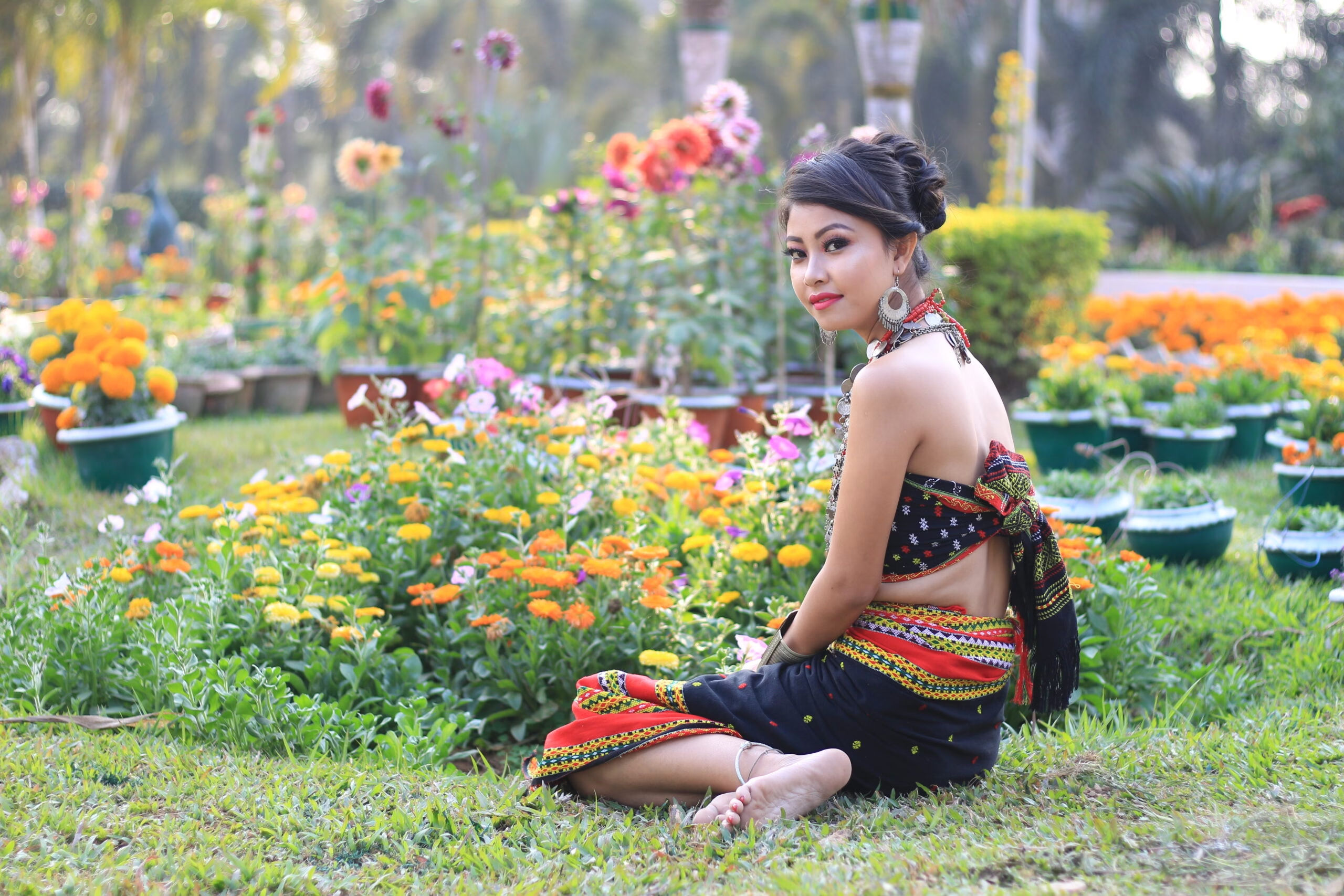“The Largest Tribe in Tripura: A Glimpse into the Rich Culture of the Tripuri People”

Introduction:
In the northeastern state of India, Tripura, a diverse tapestry of cultures and communities coexist harmoniously. Among these, the Tripuri tribe, also known as the Tipra or Tripura people, holds a distinct and prominent place. As the largest tribe in Tripura, the Tripuri people have a rich cultural heritage and a unique way of life that has endured for centuries.
In this article, we will delve into the fascinating world of the Tripuri tribe, exploring their history, culture, and contributions to the state of Tripura.
A Brief History:
The origins of the Tripuri people can be traced back to ancient times, making them the indigenous inhabitants of Tripura. Their history is closely intertwined with the history of the region itself. Over the years, they have adapted to changing circumstances, including the influx of other communities into Tripura, yet have managed to preserve their distinct identity.
Population and Distribution:
With a significant population in Tripura, the Tripuri tribe plays a pivotal role in shaping the state’s cultural landscape. They are primarily concentrated in the hill districts of Tripura, such as Dhalai, Unakoti, and North Tripura, where they continue to maintain their traditional way of life.
Language and Culture:
The Tripuri people have their own language, Kokborok, which is recognized as one of the official languages of Tripura. It is integral to their cultural identity and is used for communication within the community. The Tripuri culture is vibrant and colorful, with a rich tapestry of music, dance, and festivals. Their traditional attire, adorned with intricate designs and vibrant colors, is a testament to their cultural heritage.
Religion and Beliefs:
The majority of Tripuri people practice a blend of indigenous animistic beliefs and Hinduism. Their religious practices are closely tied to nature, with a deep reverence for the elements and the environment. Festivals like “Ker Puja” and “Goria Puja” are celebrated with great enthusiasm, showcasing their spiritual connection with nature.
Contributions to Tripura:
The Tripuri tribe has made significant contributions to the socio-economic and cultural fabric of Tripura. They are skilled artisans, known for their craftsmanship in bamboo and cane work. Additionally, they are actively involved in agriculture, cultivating crops like rice, ginger, and turmeric, which are vital to the state’s economy.
Challenges and Preservation:
While the Tripuri tribe has a rich heritage, they also face challenges in preserving their cultural identity in the face of modernization and urbanization. Efforts are being made by the government and various organizations to promote and protect their culture and traditions.
Conclusion:
The Tripuri tribe, as the largest tribe in Tripura, is an integral part of the state’s diverse cultural mosaic. Their history, language, culture, and contributions are a testament to the richness of India’s northeastern heritage. As Tripura continues to develop and modernize, it is crucial to recognize and preserve the unique cultural legacy of the Tripuri people, ensuring that their traditions endure for generations to come.
Tripura Tribal History: A Journey Through Time
The northeastern state of Tripura in India boasts a diverse cultural tapestry, and at the heart of this cultural mosaic lies the history of its indigenous tribal communities. The history of the tribal populations in Tripura is a fascinating journey through time, characterized by resilience, adaptation, and preservation of unique traditions. In this article, we will explore the tribal history of Tripura, tracing its roots and evolution.
Ancient Origins:
The tribal history of Tripura can be traced back to ancient times, with the indigenous tribes of the region forming the earliest inhabitants. The Tripuri tribe, also known as the Tipra or Tripura people, is the largest and most prominent among them. These tribes have deep-rooted connections with the land, forests, and rivers of Tripura.
Early Civilization:
Historical records suggest that Tripura was inhabited by several indigenous tribes, each with its own distinct culture and traditions. These tribes lived in harmony with nature and practiced animistic beliefs, worshipping various natural elements and spirits.
Influence of External Forces:
Over the centuries, the history of Tripura saw the influence of external forces, including migrations of different communities from neighboring regions. The intermingling of cultures resulted in the assimilation of customs and traditions, leading to a unique cultural amalgamation in the state.
The Era of Kingdoms:
Tripura witnessed the rise and fall of various dynasties and kingdoms, including the Tripura Kingdom, which was ruled by the Manikya dynasty for several centuries. During this period, the tribal communities played a significant role in the socio-economic and cultural life of the kingdom. They contributed to agriculture, craftsmanship, and trade, enriching the overall heritage of the region.
Religious Transition:
With the advent of external influences, particularly Hinduism, many tribal communities gradually adopted elements of the new religion. This transition led to the syncretic blending of indigenous animistic beliefs with Hindu practices, shaping the unique religious landscape of Tripura.
Colonial Rule and Aftermath:
The British colonial period had a profound impact on the tribal communities of Tripura. The colonial administration introduced administrative reforms, altered land ownership patterns, and influenced the socio-economic structure of the region. After India gained independence in 1947, Tripura became a part of the Indian Union, leading to further transformations in governance and society.
Cultural Heritage:
The tribal communities of Tripura have managed to preserve their rich cultural heritage despite the changing times. Their music, dance forms, and festivals reflect a deep connection to nature and spirituality. Kokborok, the language of the Tripuri tribe, remains an integral part of their cultural identity.
Challenges and Revival:
While the tribal history of Tripura is marked by resilience, these communities face challenges such as socio-economic disparities and the preservation of their cultural heritage. Government initiatives and tribal welfare programs aim to address these issues and promote the well-being of these indigenous populations.
Conclusion:
The tribal history of Tripura is a testament to the enduring spirit of its indigenous communities. It is a story of adaptation, coexistence, and cultural vibrancy that continues to shape the identity of the state. As Tripura progresses into the modern era, efforts to recognize and preserve the rich history and heritage of its tribal populations become increasingly important, ensuring that their legacy endures for generations to come.
Tripura State Tribal List: A Diversity of Indigenous Communities
Tripura, a northeastern state in India, is renowned for its cultural diversity, and a significant part of this diversity is attributed to its indigenous tribal communities. These tribes have their own distinct identities, languages, and cultures. Below is a list of some of the prominent tribal communities in Tripura:
- Tripuri (Tipra):
- The largest tribal community in Tripura, they are also known as Tipra or Tripura people. They have a rich cultural heritage and are primarily concentrated in the hill districts of the state.
- Reang (Bru):
- The Reang tribe is one of the major tribal communities in Tripura. They have their own language and are primarily found in the southeastern part of the state.
- Chakma:
- The Chakma tribe is known for their distinctive language and culture. They primarily inhabit the Chittagong Hill Tracts and the southern regions of Tripura.
- Halam (Malsum):
- The Halam people have a significant presence in Tripura, mainly in the hilly regions of the state. They have their own language, Halam, and are known for their agricultural practices.
- Mog (Mogh):
- The Mog tribe is another indigenous community in Tripura, primarily residing in the hilly and forested areas of the state.
- Jamatia (Jamatiya):
- The Jamatia tribe is known for their traditional agricultural practices. They are concentrated in various parts of Tripura.
- Noatia (Nuatia):
- The Noatia people have their own distinct culture and traditions. They are predominantly found in the hilly regions of Tripura.
- Uchoi (Utsai):
- The Uchoi tribe is a smaller tribal community in Tripura, known for their contributions to the cultural diversity of the state.
- Darlong:
- The Darlong people have a unique cultural heritage, including their traditional dance forms and music. They are primarily located in the state’s hilly areas.
- Koloi (Kolari):
- The Koloi tribe is an indigenous community in Tripura with its own customs and way of life.
- Kuki:
- The Kuki community, though smaller in number, has a presence in Tripura, especially in the border regions.
- Munda:
- The Munda tribe, although more commonly associated with Jharkhand and neighboring states, also has a presence in Tripura.
It’s important to note that while these are some of the prominent tribal communities in Tripura, there are several other smaller tribes and sub-tribes, each contributing to the cultural tapestry of the state. The government of Tripura, in collaboration with various tribal welfare organizations, works to promote and preserve the unique heritage and traditions of these indigenous communities.
AGULI STAFF DESK










